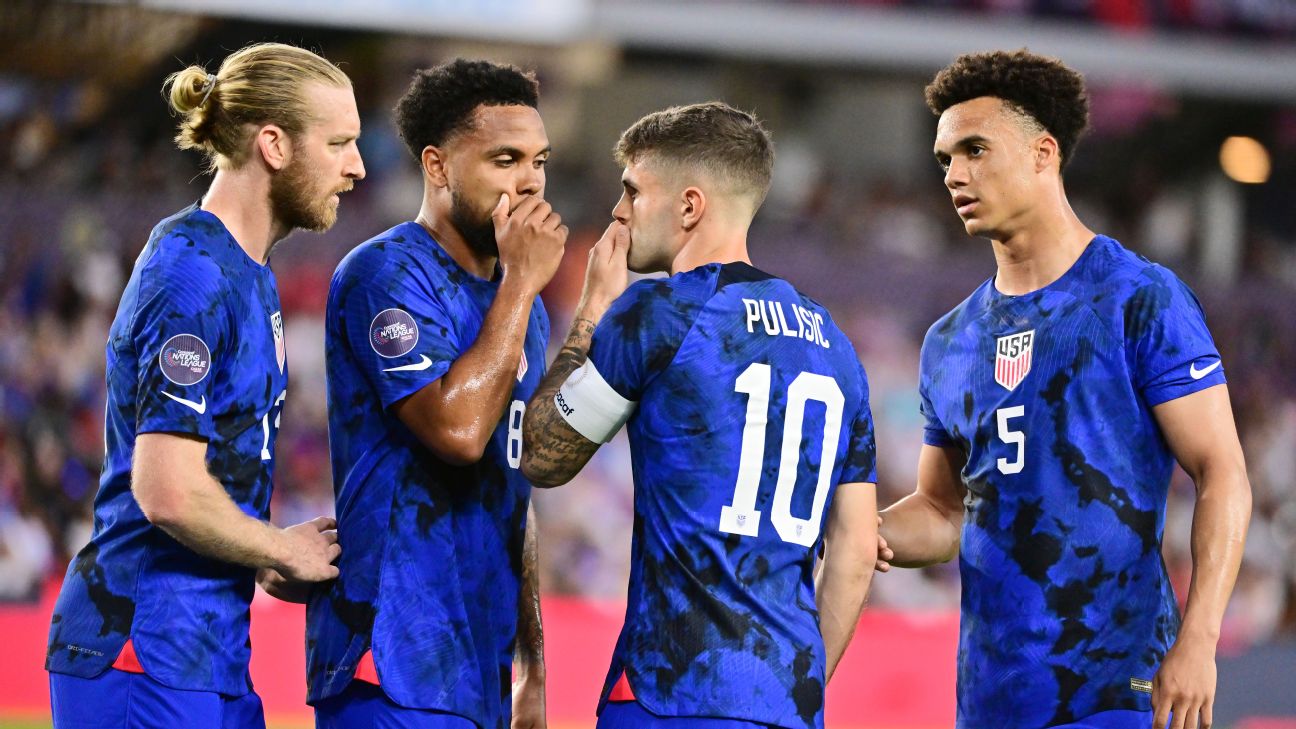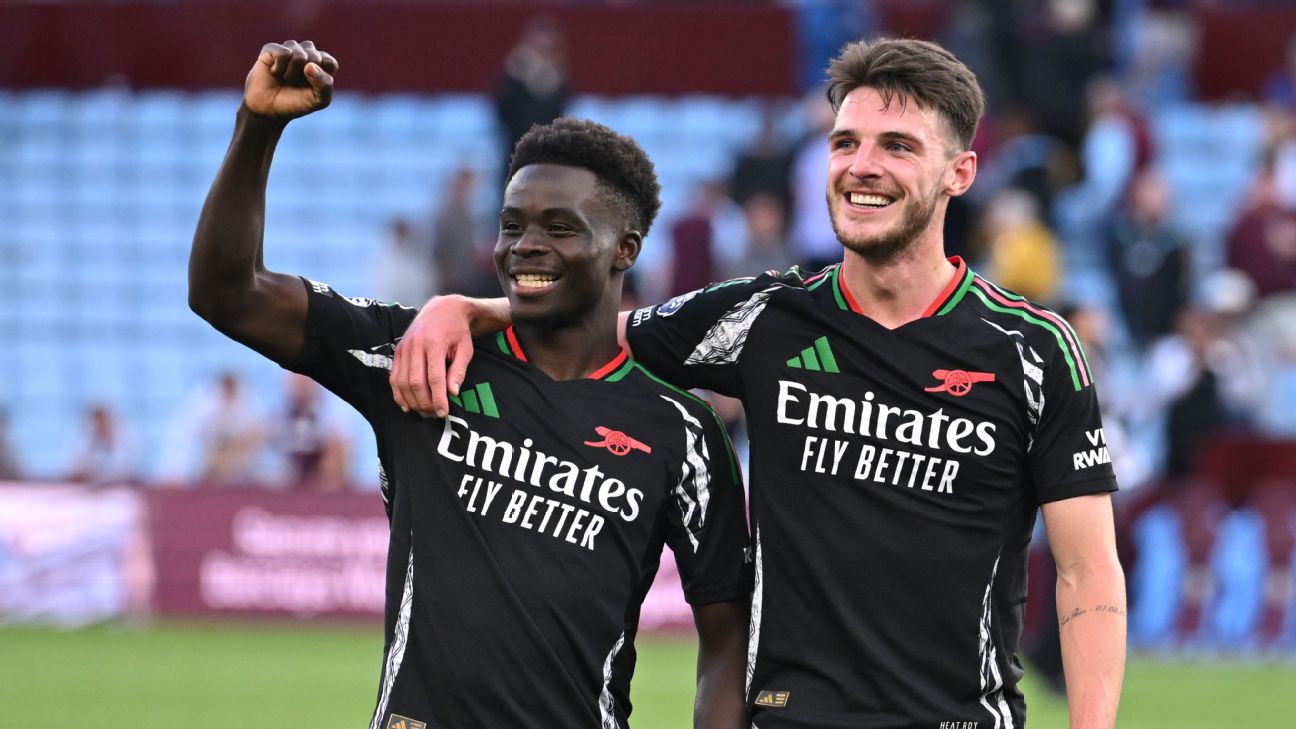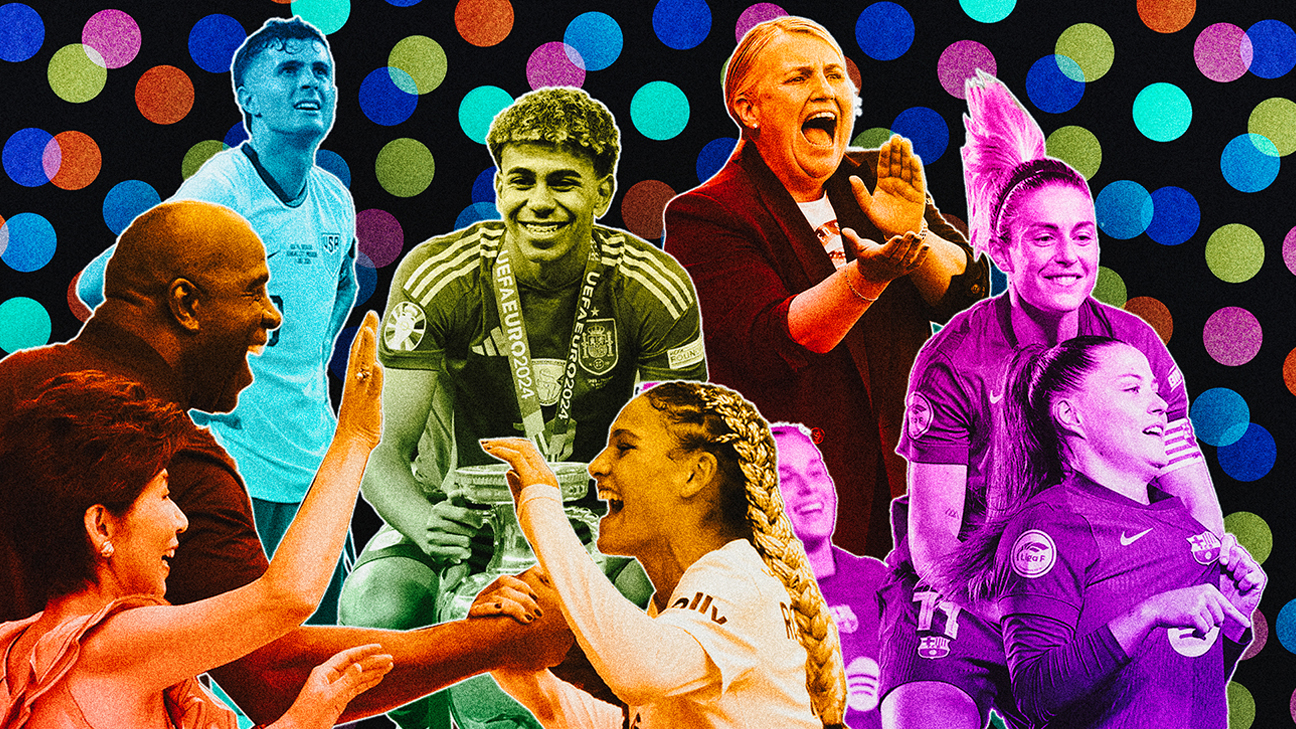You’re probably not going to agree with this, but all in all, the previous 365 days were a successful 365 days for the United States men’s national team.
Sure, there was a blackmail scandal. And yeah, there was also an absurdly convoluted hiring process for the new manager that led the federation to simply just re-hire the old manager. But the blessing and the curse — the curse, mostly — of this whole thing is that all that really matters is the World Cup. How you play for a couple games every four years determines whether or not things are going well or terribly.
And in Qatar, the USMNT played quite well! They didn’t give up a goal from open play in the group stages. They played England to a standstill. They broke down a tough Iranian defense in a match they had to win. And then they lost to the Netherlands in a round-of-16 game that was much closer than the scoreline suggested.
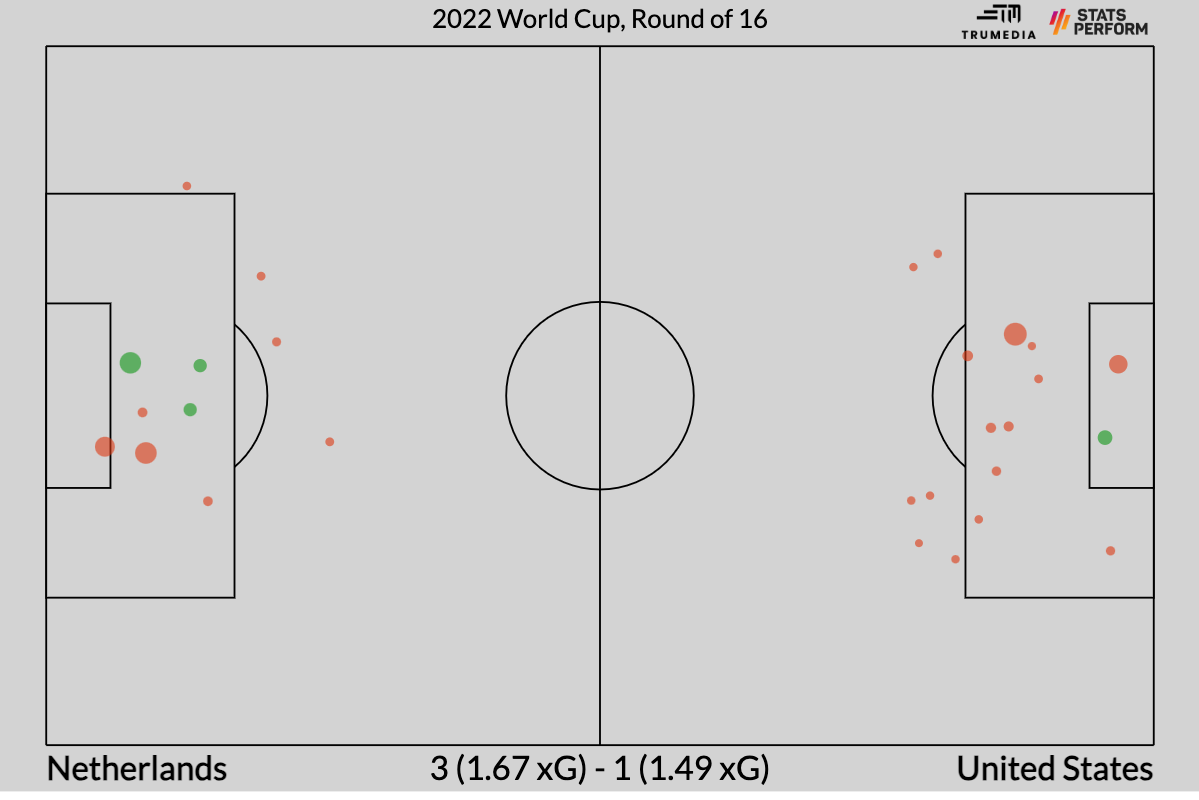
The main reason the USMNT played well at the World Cup is the main reason all teams play well: the Americans have good players. For the U.S., though, those good players all performed despite mostly struggling through lackluster club seasons. It was a good year for the USMNT, but it was a bad year for Americans in Europe.
With so many key players in new situations or at new clubs, then, let’s take a look at what the rest of the 2023-24 campaign might have in store for the USMNT’s key players.
Matt Turner
-
Position: Goalkeeper
-
Age: 29
-
Team: Nottingham Forest
My rough theory of the USMNT at the World Cup is this: they only had nine truly high-quality players. There was Matt Turner in goal, one center back, two fullbacks, the entire midfield, and then the two wingers. To make a deep run at a World Cup that’s not heavily driven by luck, I think you probably need at least 14 guys at that level.
A big reason why the U.S. struggled as games went on isn’t that manager Gregg Berhalter was bad at making subs — it was that all of the subs who came in were significantly worse than the players they replaced. So, for this exercise, we’ll be focusing on those nine players, plus Brenden Aaronson, Gio Reyna, and Folarin Balogun.
We start with Turner who, well, didn’t do much starting last season. In fact, the undisputed American No. 1 didn’t start a single Premier League game for Arsenal in his one year with the club. That led to an €8.15 million move to Nottingham Forest this summer, and it also led to Turner playing every minute of every possible Premier League match so far. Per Stats Perform, he’s already saved 1.7 goals above average based on their post-shot expected-goals model:
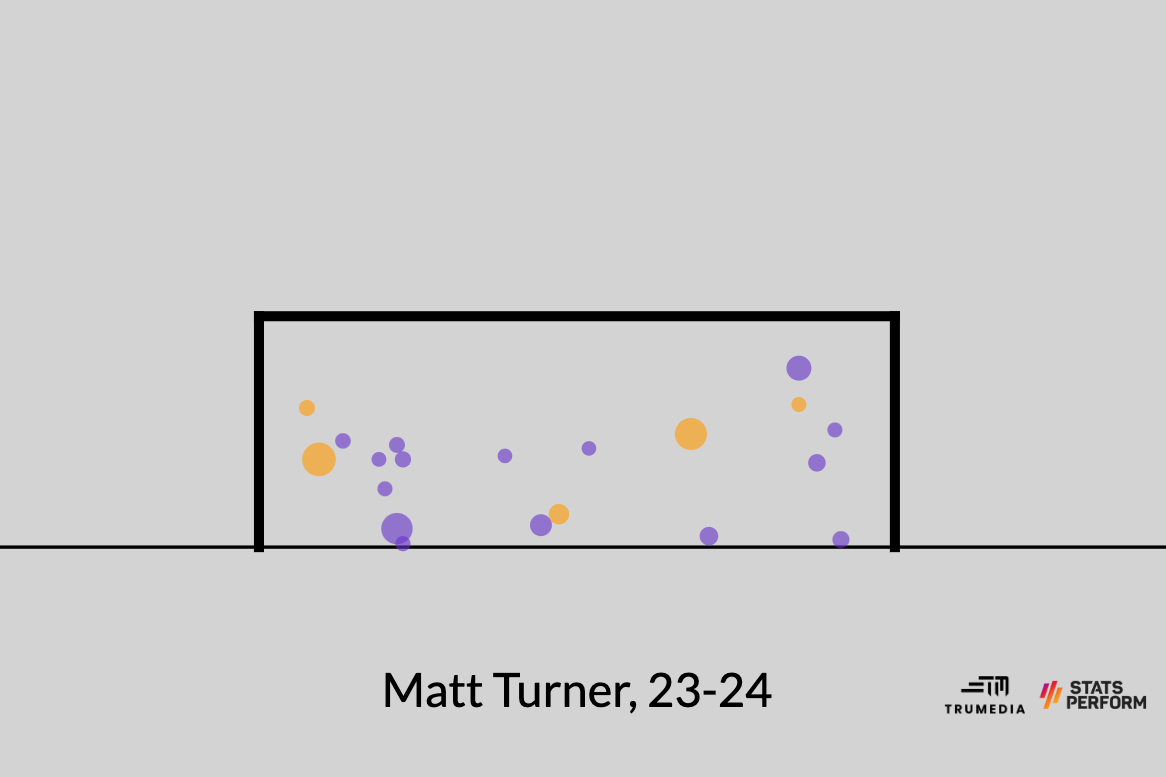
The analysis is pretty simple here: Turner didn’t play at all in the Premier League last season, and now barring injury, it seems likely he’ll play every minute this season. Another bonus, which Turner himself has helped create with all those saves: while Forest were one of the favorites to be relegated before the season began, the latest betting-market projections have them finishing all the way up in 13th place out of 20 teams.
Tim Ream
-
Position: Center back
-
Age: 35
-
Team: Fulham
I’m not worried about Tim Ream. He is what he is: an athletically limited center back who reads the game well and can progress the ball out from the back as well as just about any center back who doesn’t play for Manchester City. That’s probably why Pep Guardiola told him that he’d be playing for Manchester City if he weren’t so damn old. And that’s why his goal last weekend for Fulham must’ve been especially sweet:
However, I am worried about Fulham. They’ve allowed the second-most goals in the league through four matches, and they’ve conceded the most xG by far: 11.7, while no one else is even at 10. Per Soccerment, they have the third-fewest expected points — based on xG created and conceded in each individual match — ahead of only Sheffield United and Burnley.
While last season was something of a coronation for Ream — finally, starring for a team in the top half of the table — this season might be more like what Fulham are used to: scrapping for survival.
Antonee Robinson
-
Position: Left back
-
Age: 26
-
Team: Fulham
Can you just read back that previous section and apply most of the same ideas — except the “old” part — to Antonee Robinson?
Perhaps there’s some more room for development for a player like Robinson, but at 26, he’s already in his prime. With the lower level of competition he faces with the USMNT, he’s able to have more of an offensive impact, but with Fulham, he’s more of an ever-present physical force, carrying the ball up field, making plays without it, and not really contributing much at all on the attacking end. Last season, Robinson played north of 3,000 minutes, but just registered one assist from underlying numbers that didn’t suggest he should’ve had any more.
Fulham never really made an effort to replace their star center forward Aleksandar Mitrovic, who left for Saudi Arabia this summer, so they’re going to need to find more attacking production from somewhere on the roster. Can Robinson be one of the players to provide it?
Sergiño Dest
-
Position: Right back
-
Age: 22
-
Team: PSV Eindhoven
USMNT fans love to stage-manage the careers of all the American players by worrying about what move is best, as if any of us can even define what “best” actually means. It’s a frame of mind that can convince you that every player should just stay at Borussia Dortmund or Ajax forever when in reality, there’s no way to know what move makes the most sense. Most European clubs are inherently unstable — such is the nature of an open system that’s now become closed for a handful of the richest clubs — and teams are changing managers once every couple seasons, if not sooner. You kind of have to just trust in the numbers: there are more good American players in Europe now than ever before.
Case in point: Sergiño Dest. He broke out at Ajax as a teenager, then moved to Barcelona right as the club was entering its post-Messi era. He started 40 games in his first two years in LaLiga — all before his age-21 season — before getting sidelined by Barcelona manager Xavi and then sent last season to AC Milan, where he also barely played.
Despite all of that, he was absolutely fantastic at the World Cup and has just generally been fantastic whenever he’s played for the USMNT. He’s not the strongest defensive fullback in the world, but in terms of pure technical skill and creativity, he’s in the 99th percentile among all players to ever play for the USMNT.
He’s now on loan at PSV Eindhoven in the Netherlands. It’s a step down — Barcelona are ranked eighth in the ClubElo model, Milan 12th, and PSV 25th — but he should finally get consistent playing time, and he’ll still get to play in the Champions League. Dest’s prime is still years away, and development is rarely linear. He’ll be fine — if you’ve seen him play for the USMNT, you know that’s true.
Tyler Adams
-
Position: Defensive midfield
-
Age: 24
-
Team: Bournemouth
Coming into the World Cup, Tyler Adams was probably the “in form” American outfield player. He was one of the best defensive midfielders in the first half of the Premier League season. And while so many players have really struggled to make the Bundesliga-to-Premier-League transition, Adams easily slotted into the Leeds starting lineup, won the ball a ton, and also pushed the ball forward at a sizable clip. He certainly benefited from playing for his former RB Leipzig manager in Jesse Marsch, but it’s also really hard to play as a holding midfielder for Jesse Marsch.
Adams was great in the World Cup too, and then he got hurt and everything fell apart with Leeds. In projecting or worrying about Adams this year, performance doesn’t really seem like it’s going to be a problem. He moved to Bournemouth from relegated Leeds for €26.9 million. This is his first time away from a “Red Bull” coach, but I wouldn’t be too concerned with that. He’s simply just an above-average Premier League player.
Instead, the thing to watch out for is his availability. Last season’s 2,100-plus minutes were the most of his European career and the most he’s played in a domestic campaign since he was an 18 year old with the New York Red Bulls. From a USMNT perspective, he missed both Nations League matches — and the team still looked great without him. From a Bournemouth perspective, he’s already missed the first four games with a hamstring injury, and his team has two points.
Yunus Musah
-
Position: Central midfield
-
Age: 20
-
Team: AC Milan
A couple weeks ago, I wrote a piece about potential breakout players in the Premier League. (Among the names mentioned: Brighton’s Evan Ferguson, Liverpool’s Darwin Núñez, and Brentford’s Bryan Mbeumo. It’s looking good so far!) One of the notions I touched on was how playing time at a young age can portend future success. Per research from the consultancy Twenty First Group, the benchmark by the age of 21 is 4,717 minutes. Players who hit that tend to become successful pros.
Well, Yunus Musah doesn’t turn 21 until the end of November and he’s already at 4,899 minutes.
The long-term outlook for Musah is great. He’s been much more effective for the USMNT than he’s been at the club level. With Valencia, he’s mostly been a ball carrier and passing outlet, while slowly adding other pieces to his game. This is normal — he still can’t legally buy a beer at a bar in Cincinnati for another two months. He has all of the so-called tools, and it’s likely all going to come together at some point.
However, I’m a little more bearish on his outlook for this season. He moved to Milan for €20 million, and the simple fact that Milan wanted to acquire him speaks pretty highly of his potential. Under their new ownership, Milan’s player acquisition strategy is as well-thought-out and as detailed as anyone else in Europe. However, Milan acquired a number of other players in Musah’s same position this summer.
Through three matches, they’ve looked fantastic. Midfielders Rade Krunic and Tijani Reijnders have played every minute so far, and Ruben Loftus-Cheek has been out there more than 75% of the time. Loftus-Cheek, in particular, is injury prone, but my guess is that Musah remains a backup for the majority of the season. He’ll get plenty of minutes with Milan playing in the Champions League and also potentially in a title race. It just seems likely that, after switching teams and joining a much more competitive club, his overall minutes load takes a step back this year before bouncing back up in a season or two.
Weston McKennie
-
Position: Central midfield
-
Age: 25
-
Team: Juventus
Kind of a strange one, huh? After playing a good amount under manager Max Allegri for Juventus before the World Cup, Weston McKennie was loaned to Leeds for the second half of the season. The coach who wanted to bring him in quickly got fired, then Adams got injured, and the rest of the season was a complete mess. It’s a wash in my book.
This summer, it seemed like McKennie was all-but-guaranteed to leave Juventus … and then it just never happened. So many of these super-clubs have bloated rosters that lead to talented players just never playing in a way that wouldn’t happen within the structure of American sports. That could’ve been the case with McKennie — and it still could be — but he’s featured in slightly more than half of the available minutes for the club so far this season.
At least at the club level, McKennie seems to have developed into this new breed of midfielder that’s sprung up with an increased emphasis on the 4-3-3. Teams will have a standard holding midfielder, and then there will be one more ball-dominant passer in front of him, accompanied by another guy who doesn’t really need the ball a ton and instead receives passes between the lines and unsettles the defense with his runs into the box.
The best version of this is, say, Jude Bellingham or Ilkay Gündogan — guys that are pretty much unstoppable off the ball, but can also drop deep and comfortably function with the ball at their feet. McKennie can’t really do the latter, and he’s mainly featured as a wingback so far this year. But that hasn’t really changed things all that much. Through three games he’s third on the team in both progressive passes received and touches inside the penalty area, behind Dusan Vlahovic and Federico Chiesa, the team’s two starting forwards.
More of that would make for a successful season.
Christian Pulisic
-
Position: Winger
-
Age: 24
-
Team: AC Milan
One of the under-discussed stories of the last World Cup: Christian Pulisic had a truly horrible season for Chelsea, and yet he was lights out in Qatar. Even though he’s struggled through injuries and for playing time over the past cycle, the best player in the history of American soccer still showed up for the only four games that really matter.
His club career hasn’t gone as many had hoped, but I don’t think anyone could’ve reasonably expected Pulisic to play any better in his first World Cup. Sure, he dropped deep too often for my liking, but his overall impact was immense. He met the hype from when he first broke onto the scene.
As the exercise suggests, there’s not as much of a correlation between current-moment club performance and national-team performance as we might think. That said, it certainly can’t hurt the national team to have more players flourishing for their club teams. And so far this season, that’s been the case for Pulisic.
Through three games with Milan, Pulisic is leading the team in non-penalty xG, and he’s tied for the lead with superstar Rafael Leão in progressive passes received and passes into the penalty area. Much like he’s done with the USMNT, Pulisic is really just doing a little bit of everything: progressing the ball up the field, finding space between the lines, pushing the ball into the penalty area, and making those perfectly timed runs into the heart of the box:
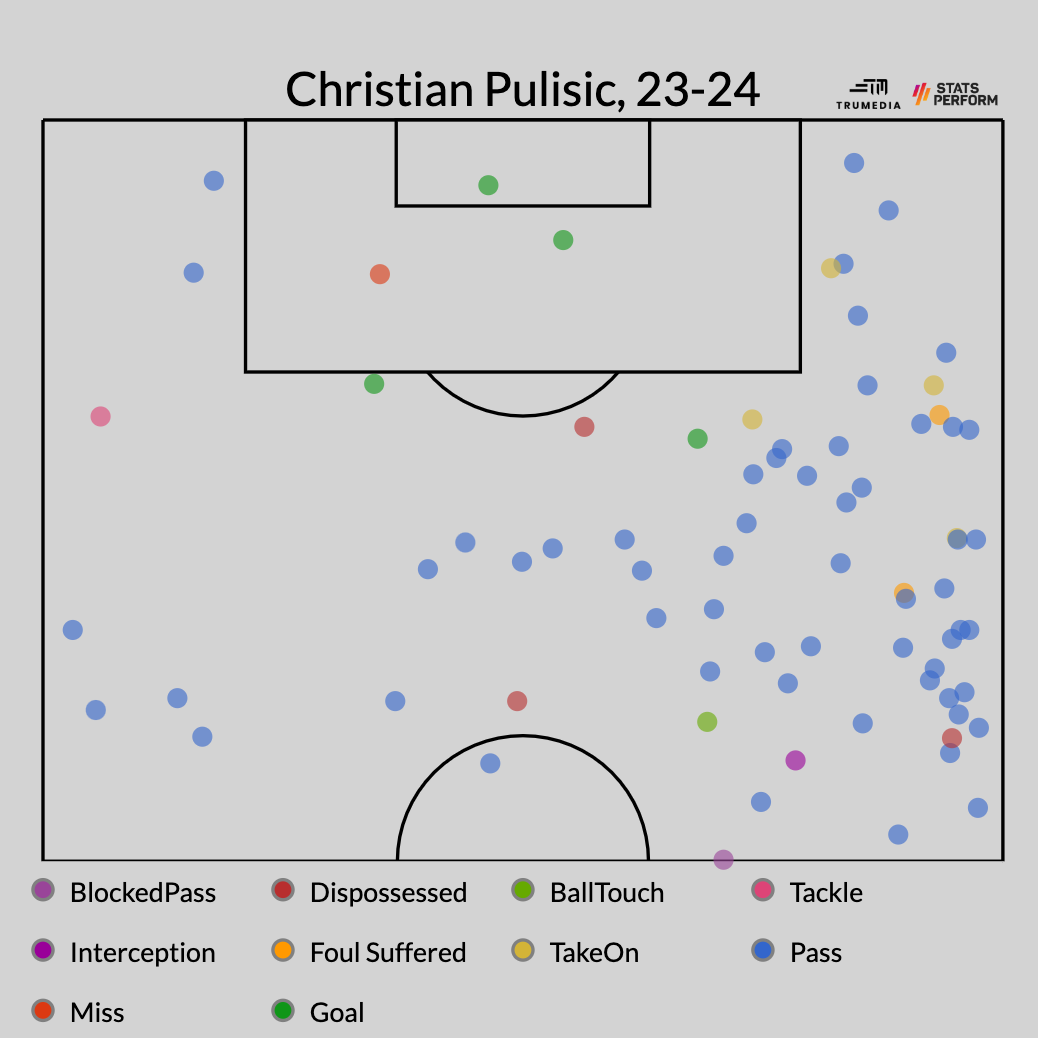
Although Pulisic hasn’t really put together one comprehensively great season since leaving Borussia Dortmund, he’s still only 24. Players can still reach a new level — or reach the level everyone hoped they’d reach — at that age. Early signs at Milan are incredibly promising, but as he showed last December, even if things aren’t going well in Europe, he’s still going to show up for the USMNT.
Timothy Weah
-
Position: Winger
-
Age: 23
-
Team: Juventus
All right, this is getting a little weird. In the first game of the season, Timothy Weah played 45 minutes and then came off at halftime. In game two: 81 minutes. In game three: seven. In the first two matches, the player who came in for Weah: Weston McKennie. In the third match, the player whom Weah came in for: Weston McKennie.
Although he plays as a winger for the U.S., Weah mostly featured at fullback for Lille last season. Perhaps unsurprisingly, as a winger-turned-fullback, he took a ton of shots for a player in that position. Afforded with more space to work in, he also carried the ball a ton and got on the end of a bunch of progressive passes. This all was enough for Juventus to pay €11.3 million to bring him to Italy and try to turn him into a wingback.
It raises an interesting question for the USMNT in particular: would the team be better off with Weah getting winger minutes for a much worse team than Juve, or for him to become a starting fullback for what will (theoretically) be a Champions League team? Given that Weah was one of the starting wingers in Qatar, you might side with the former, but I’m not sure Weah ever really showed the potential to produce goals and assists at a high-enough clip in France to become an effective winger, while the move to wingback led him to a (theoretical) top club like Juventus.
Perhaps Weah will develop some new defensive skills in that wingback role, and it’s not a bad thing for the USMNT. Plenty of players outside of the biggest nations will play more difficult and further-up roles for their national teams than they do for their club teams. And if the move to wingback turns Weah into a more defensive winger when he plays for the USMNT, that might provide some good balance across from Pulisic and in front of Sergino Dest.
We’ll see if McKennie and Weah continue with the 50-50 minutes share. My guess, as of now, is that Weah’s time will decrease while McKennie’s continues to tick up.
Brenden Aaronson
-
Position: Forward
-
Age: 22
-
Team: Union Berlin
Brenden Aaronson might be one of the few American players whose game is better suited for the club level rather than international play. While international play is, on the whole, a much lower level of soccer than the Premier League or the Champions League or any other major European league, the way the game is played is also different. There’s nowhere near as much pressing and, well — pressing is Aaronson’s main skill.
In the Premier League last season, pressing was all Aaronson really had. He undershot both his expected goals and assists — meaning he was unfortunate not to have more of both — but at 0.19 xG+xA per 90 minutes, he ranked in just the 19th percentile among all Premier League wingers and attacking midfielders. Leeds weren’t one of the typical terrible relegated sides, so you can’t really blame his lack of production on that, either.
With Aaronson now on loan at Union Berlin in the Bundesliga, you might be thinking great, he’s just gonna go run around a lot and not develop any new skills. However! Much of Union’s success in Germany comes from the fact that they don’t press. They ranked last in the Bundesliga last season in passes allowed per defensive action (PPDA). Per Soccerment, they ranked third to last in “gegenpressing intensity” (the percentage of times they pressured the ball within six seconds of losing it in the attacking third), and last in build-up disruption (how frequently each team completes their passes against you, compared to their average).
So Aaronson seems likely to get a lot of playing time, for a team in the Champions League, playing a different style to the ones he’s experienced at Red Bull Salzburg and Leeds United. You can’t really ask for much more than that.
Gio Reyna
-
Position: Attacking midfield
-
Age: 20
-
Team: Borussia Dortmund
In his age-19 season, here’s how Giovanni Reyna compared to the other players in the Bundesliga in his specific role. Expected threat (xT) is a metric that essentially calculates how much you increase your team’s probability of scoring a goal based on where you move the ball from via a pass or a carry. And expected offensive value added (xOVA) is basically expected goals+expected assists, but removing the value created by the passes the player receives. From Soccerment:
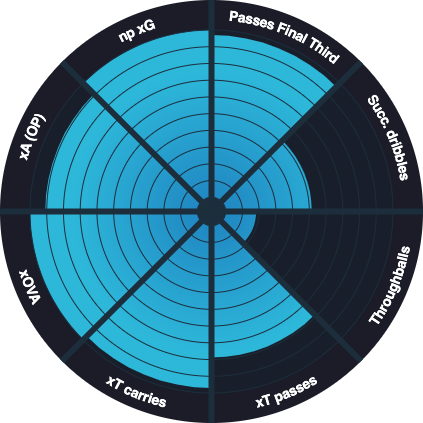
The only problem with this: Reyna played 625 minutes last season, and then just 400-something minutes the year before that. On top of that, it’s easier to have an impact and put up impressive numbers when you’re frequently coming off the bench. And on top of that, we’ve now seen plenty of players post gaudy stats in the Bundesliga, only for their performances to drop off once they move to another league that doesn’t afford so many possessions per game to each team.
All of which is to say: we know a lot about his parents, but we still don’t really know all that much about Gio Reyna. For that reason, he’s easily the most tantalizing talent in the player pool — not just now but in the history of American soccer. It’s just … he has to start playing games at some point. He’s still only 20, but he’s already missed 66 games due to injury, per the site Transfermarkt.
The very modest goal for this season should be to get at least, say, 1,200 league minutes under his belt. He’s already missed the start of the Bundesliga season and won’t be playing for the USMNT during this round of friendlies, either.
Folarin Balogun
-
Position: Forward
-
Age: 22
-
Team: AC Monaco
Among all the players in Europe’s Big Five leagues last season, just six of them generated more non-penalty xG and xA than Folarin Balogun. Those six:
-
Robert Lewandowski
-
Kylian Mbappé
-
Lionel Messi
-
Erling Haaland
-
Antoine Griezmann
-
Mohamed Salah
And despite all of that — and the fact that he just turned 21 last month — Monaco were somehow able to acquire him for just €30 million this past summer.
I don’t think this really applies in a super-meaningful way to the USMNT — he’s already the best center forward the Americans have ever had and that’s not likely to change, regardless of how he develops. But I guess the one question going forward is whether Balogun benefited from the transitional style favored by Reims last season? Can he generate all that offense without as much space to run into?
Monaco have been lights-out to start the Ligue 1 season without Balogun, and they don’t stand out as a particularly fast or deliberate side. I reckon Balogun will be just fine, but we’ll find out soon enough.
